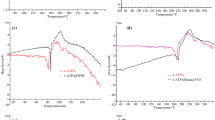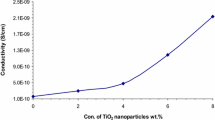Abstract
Introduction
Nowadays, propulsion materials are receiving increased attention as an important component in electric motors. So, awareness of their chemical reactivity and geometric and electronic structures can help to make materials with higher quality and efficiency. In this study, we have proposed novel glycidyl nitrate copolymers (GNCOPs) and meta-substituted derivatives as propulsion materials.
Method
Based on density functional theory (DFT) method, chemical reactivity indices have been calculated for predicting their behavior in burning process.
Result and disscussion
Adding functional groups changes reactivity of the GNCOP compound, especially, in the –CN functional group, chemical potential, chemical hardness, and electrophilicity change −0.374, +0.007, and +1.342eV, respectively. In addition, these compounds have dual properties in interaction with oxygen molecule. Optoelectronic study in time-dependent DFT framework shows that there are three peaks with significant excitations.
Conclusion
In conclusion, adding functional group into the GNCOPs can introduce new materials with high energetic properties.



Similar content being viewed by others
References
Mohan YM, Mani Y, Raju KM (2006) Synthesis of azido polymers as potential energetic propellant binders. Des Monomers Polym 9:201–236. https://doi.org/10.1163/156855506777351045
Chaturvedi S, Dave PN (2019) Solid propellants: AP/HTPB composite propellants, Arab. J Chem 12:2061–2068. https://doi.org/10.1016/j.arabjc.2014.12.033
Agrawal JP (2010) High energy materials: propellants, explosives and pyrotechnics. John Wiley & Sons
Singh H, Pande SM, Kumar A, Kumar A, Mishra S, Khanna PK, More PV (2020) Exploring the telechelic block copolymers of polybutadiene and ϵ-caprolactone for composite propellant application. Mater Today Chem 16:100244. https://doi.org/10.1016/j.mtchem.2020.100244
Khanlari T, Bayat Y, Bayat M (2022) Preparation of a novel polyurethane network based on PPG–PGN–PPG: investigation of the effect of plasticizers on its properties. Polym Bull 79:709–724. https://doi.org/10.1007/s00289-020-03518-4
Selim K, Özkar S, Yilmaz L (2000) Thermal characterization of glycidyl azide polymer (GAP) and GAP-based binders for composite propellants. J Appl Polym Sci 77:538–546. https://doi.org/10.1002/(SICI)1097-4628(20000718)77:3<538::AID-APP9>3.0.CO;2-X
Shee SK, Reddy ST, Athar J, Sikder AK, Talawar MB, Banerjee S, Shafeeuulla Khan MA (2015) Probing the compatibility of energetic binder poly-glycidyl nitrate with energetic plasticizers: thermal, rheological and DFT studies. RSC Adv 5:101297–101308. https://doi.org/10.1039/C5RA16476A
Khanlari T, Bayat Y, Bayat M (2020) Synthesis, thermal stability and kinetic decomposition of triblock copolymer polypropylene glycol–poly glycidyl nitrate–polypropylene glycol (PPG–PGN–PPG). Polym Bull 77:5859–5878. https://doi.org/10.1007/s00289-019-03051-z
Ghoroghchian F, Bayat Y, Abrishami F (2020) Synthesis and optimization of polypropylene glycol-glycidyl azide polymer-polypropylene glycol as a novel triblock copolymer binder. J Chem Sci 132:106. https://doi.org/10.1007/s12039-020-01811-3
Bayat Y, Jodar S, Khanlari T (2022) Synthesis and thermal decomposition kinetics of tri-block copolymer ε-caprolactone/polybutadiene (PCL-PB-PCL); preparation of polyurethane network-based tri-block copolymer. J Polym Res 29:101. https://doi.org/10.1007/s10965-022-02949-z
Vala MM, Bayat Y, Bayat M (2020) Synthesis and thermal decomposition kinetics of epoxy poly glycidyl nitrate as an energetic binder. Def Sci J 70:461–468. https://doi.org/10.14429/dsj.70.15470
Yaseen M, Dilawar M, Ambreen H, Bibi S, Rehman SU, Shahid U, Khalid Butt M, Ghaffar A, Murtaza A (2020) Electronic, optical and magnetic properties of low concentration Ni-doped CdSe by first principle method. Bull Mater Sci 43:122. https://doi.org/10.1007/s12034-020-2078-8
Yaseen M, Ambreen H, Zia M, Javed HMA, Mahmood A, Murtaza A (2021) Study of half metallic ferromagnetism and optical properties of Mn-doped CdS. J Supercond Nov Magn 34:135–141. https://doi.org/10.1007/s10948-020-05674-0
Ambreen H, Aldaghfag SA, Yaseen M, Iqbal J, Zahid M, Dahshan A, Hegazy HH (2022) Electronic, optical and magnetic characteristics of V doped BeS. Phys Scr 97:065807. https://doi.org/10.1088/1402-4896/ac6910
Wang F, Wang G, Du H, Zhang J, Gong X (2011) Theoretical studies on the heats of formation, detonation properties, and pyrolysis mechanisms of energetic cyclic nitramines. J Phys Chem A 115:13858–13864. https://doi.org/10.1021/jp2047536
Yang J, Gong X, Wang G (2017) Density functional theory and molecular dynamic investigations on the energetic and mechanical properties of nitrocellulose/nitroglycerin/pentaerythritol diazido dinitrate composites. Polym Compos 38:192–198. https://doi.org/10.1002/pc.23575
Yang J, Gong X, Wang G (2014) Theoretical studies on the plasticizing effect of DIANP on NC with various esterification degrees. Comput Mater Sci 95:129–135. https://doi.org/10.1016/j.commatsci.2014.07.024
Yang J, Wang G, Gong X, Zhang J, Wang YA (2018) High-energy nitramine explosives: a design strategy from linear to cyclic to caged molecules. ACS Omega 3:9739–9745. https://doi.org/10.1021/acsomega.8b00614
Schmidt MW, Baldridge KK, Boatz JA, Elbert ST, Gordon MS, Jensen JH, Koseki S, Matsunaga N, Nguyen KA, Su S, Windus TL, Dupuis M, Montgomery JA (1993) General atomic and molecular electronic structure system. J Comput Chem 14:1347–1363. https://doi.org/10.1002/jcc.540141112
Zhao Y, Truhlar DG (2008) The M06 suite of density functionals for main group thermochemistry, thermochemical kinetics, noncovalent interactions, excited states, and transition elements: two new functionals and systematic testing of four M06-class functionals and 12 other function. Theor Chem Acc 120:215–241. https://doi.org/10.1007/s00214-007-0310-x
Krishnan R, Binkley JS, Seeger R, Pople JA (1980) Self-consistent molecular orbital methods. XX. A basis set for correlated wave functions. J Chem Phys 72:650–654. https://doi.org/10.1063/1.438955
Pakiari AH, Eshghi F (2017) Geometric and electronic structures of vanadium sub-nano clusters, V<inf>n</inf>(n = 2-5), and their adsorption complexes with CO and O<inf>2</inf>ligands: A DFT-NBO study. Phys Chem Res 5. https://doi.org/10.22036/pcr.2017.80624.1364
W.Y. RG. Parr (1989) Density-functional theory of atoms and molecules. Oxford University Press, New York
Cooper JK, Grant CD, Zhang JZ (2013) Experimental and TD-DFT study of optical absorption of six explosive molecules: RDX, HMX, PETN, TNT, TATP, and HMTD. J Phys Chem A 117:6043–6051. https://doi.org/10.1021/jp312492v
Funding
This study has been carried out by personal cost.
Author information
Authors and Affiliations
Contributions
Milad Alizadeh conceived the presented idea and carried out computational jobs. He and Yadollah Bayat wrote the manuscript and discussed the results and contributed to the final manuscript.
Corresponding author
Ethics declarations
Ethics approval
This theoretical study reflects the authors’ own research and analysis in a truthful and complete manner.
Consent to participate
Informed consent was obtained from all individual participants included in the study.
Competing interests
The authors declare no competing interests.
Additional information
Publisher’s note
Springer Nature remains neutral with regard to jurisdictional claims in published maps and institutional affiliations.
Supplementary information
ESM 1.
(DOCX 15 kb)
Rights and permissions
Springer Nature or its licensor (e.g. a society or other partner) holds exclusive rights to this article under a publishing agreement with the author(s) or other rightsholder(s); author self-archiving of the accepted manuscript version of this article is solely governed by the terms of such publishing agreement and applicable law.
About this article
Cite this article
Alizadeh, M., Bayat, Y. Influence of functional groups in chemical reactivity and optoelectronic properties of novel glycidyl nitrate copolymers (GNCOP): a DFT study. J Mol Model 29, 82 (2023). https://doi.org/10.1007/s00894-023-05480-0
Received:
Accepted:
Published:
DOI: https://doi.org/10.1007/s00894-023-05480-0




